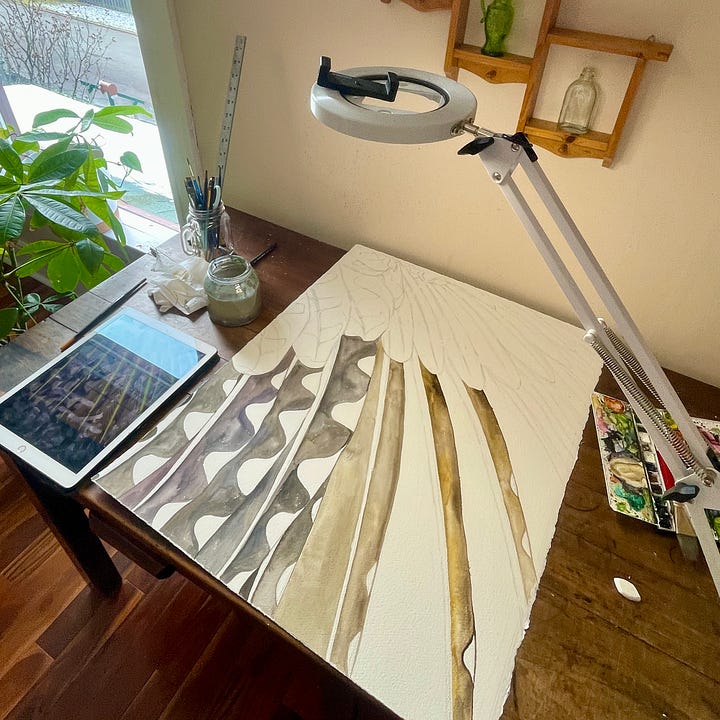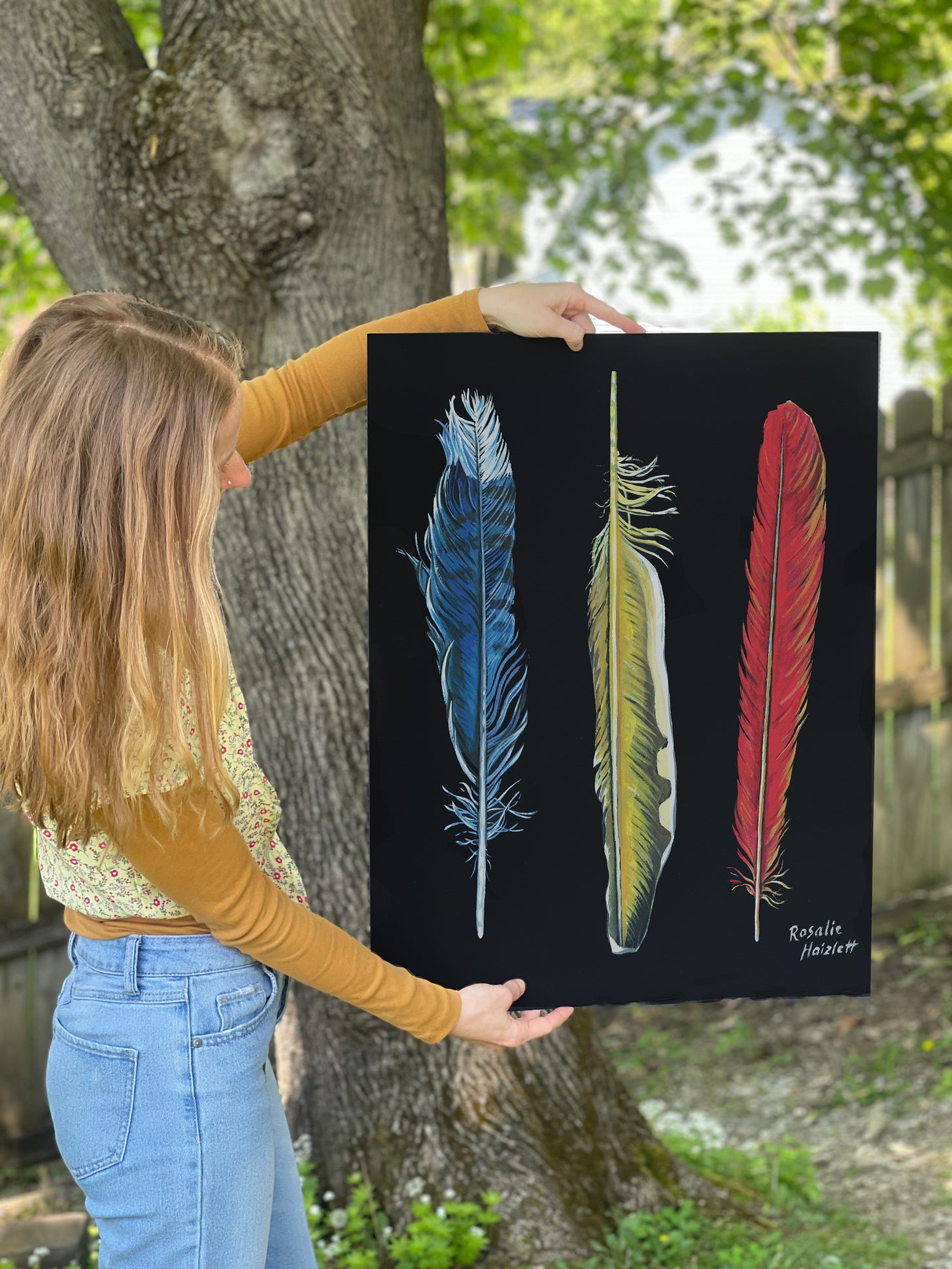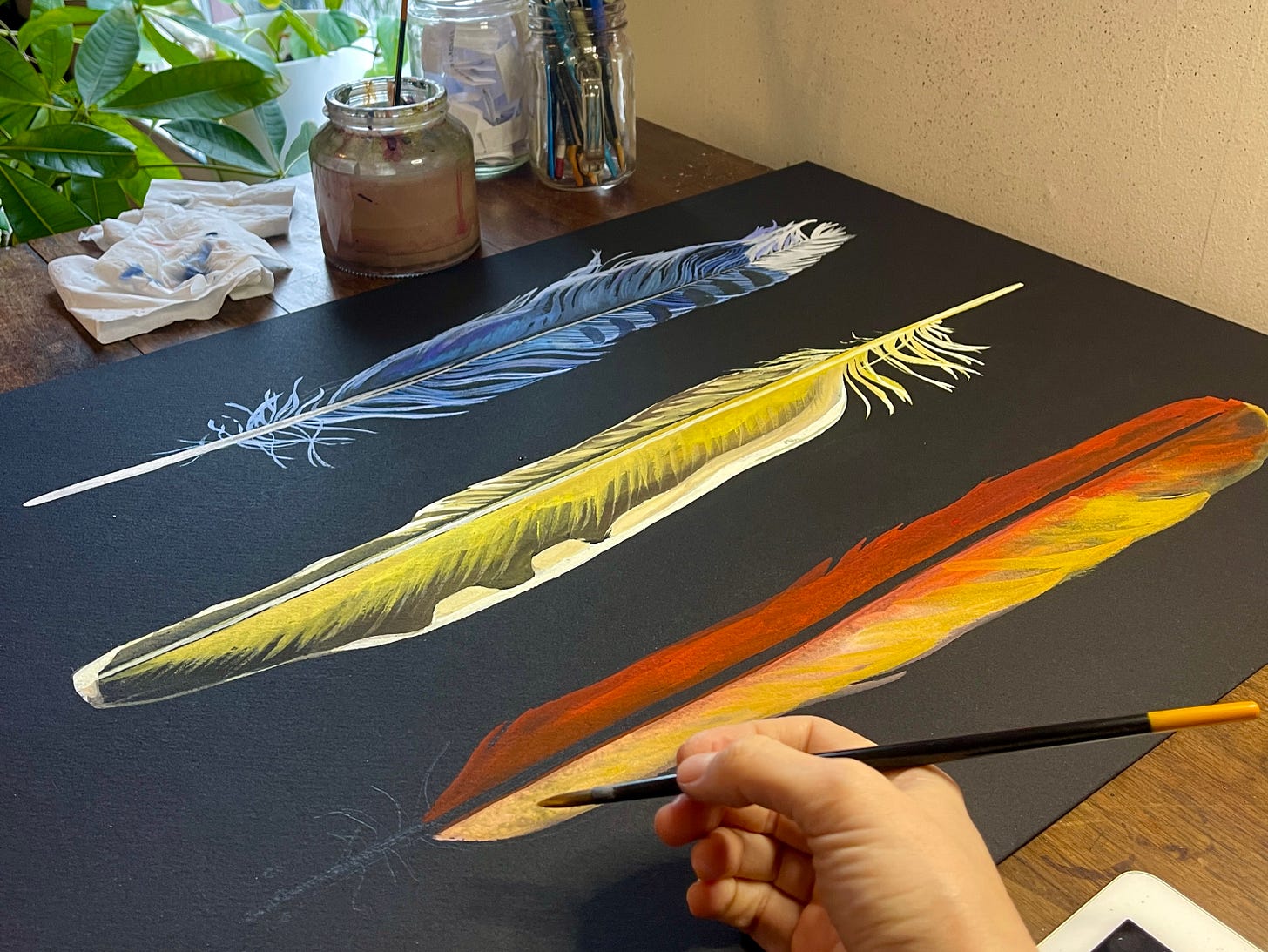Wildwing: An artistic tribute to "trash birds"
Rekindling an appreciation for common backyard birds
Today I’m excited to share some new paintings that I created for Wildwing, a small solo exhibition at the Roger Tory Peterson Institute of Natural History.
This show will be open through June 2nd, so if you’re in the Jamestown, NY area between now and then, you should definitely stop in! And please join me for a virtual, free artist talk about my artist residency at RTPI and the making of this collection on Friday (May 3) at 12 pm EST. You can register here.
The inspiration behind the series
During my childhood, our bird feeder was most commonly frequented by a handful of old standbys. Northern cardinals, blue jays, tufted titmice, house sparrows, dark-eyed juncos and black-capped chickadees were faithful friends throughout all seasons.
When I became more intrigued by the greater world of birds and bird-watching in my early twenties, I was surprised to learn that avid birders sometimes refer to these species—especially jays, sparrows and cardinals—as "trash birds" due to their ubiquitousness and sometimes bossy behavior at the feeder.
At first, I stood in firm opposition to this dismissive mindset. But somewhere along the line, a couple of years into my bird-watching hobby, I noticed myself disregarding these birds just like I'd seen others do.


I created this collection of watercolors to rekindle my appreciation for three species of common backyard birds: the yellow-shafted northern flicker, northern cardinal and blue jay. I chose these three because together they create a primary color scheme, something you don't often see in nature.
By zooming in on their artful wing textures, showcasing their distinct profiles, and painting the vivid colors of their tail feathers, I learned to see each bird as a vibrant treasure. I hope these paintings spark a newfound respect for the frequent flyers in our region. If we humble ourselves and take a closer look, there's joy to be found even in the most routine nature sightings.
Tail Feather Elegance
This gouache painting on black watercolor paper depicts a tail feather from all three of my featured birds. I learned that painting feathers on black paper is VERY enjoyable—each wispy strand packs a punch.
Posh Profiles
This gouache painting showcases the unique profiles of each bird. Each beak is shaped differently according to their diet; the cardinal has a powerful triangular beak so it can crush seeds efficiently and consume the meaty center, while the blue jay has a long, versatile beak that allows it to snatch up insects and break open nuts, seeds and eggs. Although the flicker is a woodpecker, it prefers to forage on the ground and uses its chisel-like beak to dig around in the dirt for insects and beetles.


Classy Cardinal Wing
This 22x30 inch watercolor—painted with Daniel Smith watercolors and Dr. PH Martin’s Liquid Watercolors—displays an up-close look at the wing feathers of a male northern cardinal. I enjoyed replicating the nuanced purples and blues of the rachis, or the stiff central stalk. This structure is made of keratin, the same strong, lightweight protein of human nails. Thanks to McGill Bird Observatory in Quebec for giving me permission to reference photos from their bird banding database.


Fancy Flicker Wing
Northern flickers aren’t quite as frequently seen as cardinals and blue jays, but they’re still common treetop finds in my region. In addition to being a feast for the eyes, this bird plays an important role in our ecosystem by controlling the populations of their insect prey (like ants) and by creating nests in tree cavities that are often shared by other species of birds and squirrels once the flicker has moved on.


Jazzy Jay Wing
Blue jays may have loud, slightly annoying behaviors, but when was the last time you paused to think about how truly stunning they are? This was the first painting in the series because I couldn’t wait to paint all those ravishing shades of blue. And these birds are super intelligent, too! Similar to the way that many rodents stuff their cheeks with food to carry back to their hideouts, blue jays have a special pouch in their throat and upper esophagus where they can transport as many as 3 acorns at once to their food cache in order to be prepared for winter.


I hope you enjoyed the colors and patterns of these special birds! Several of these paintings are now available as art prints in my online shop, and don’t forget to stop by my virtual artist talk on Friday. It’s the perfect lunch break activity: grab a sammy and come hear about nature art. ‘Til next time, friends!














I love discovering that almost more than writing, the thing we substackers seem to have in common is a love of birds 🪶✨
These are so gorgeous! We love the blue jays and cardinals in our yard, too. You have captured all the gorgeous color and detail exquisitely!